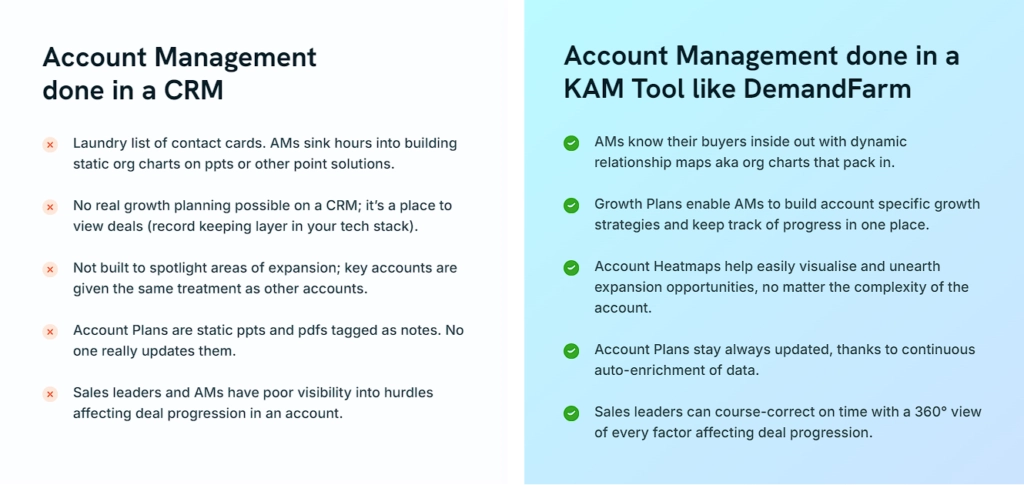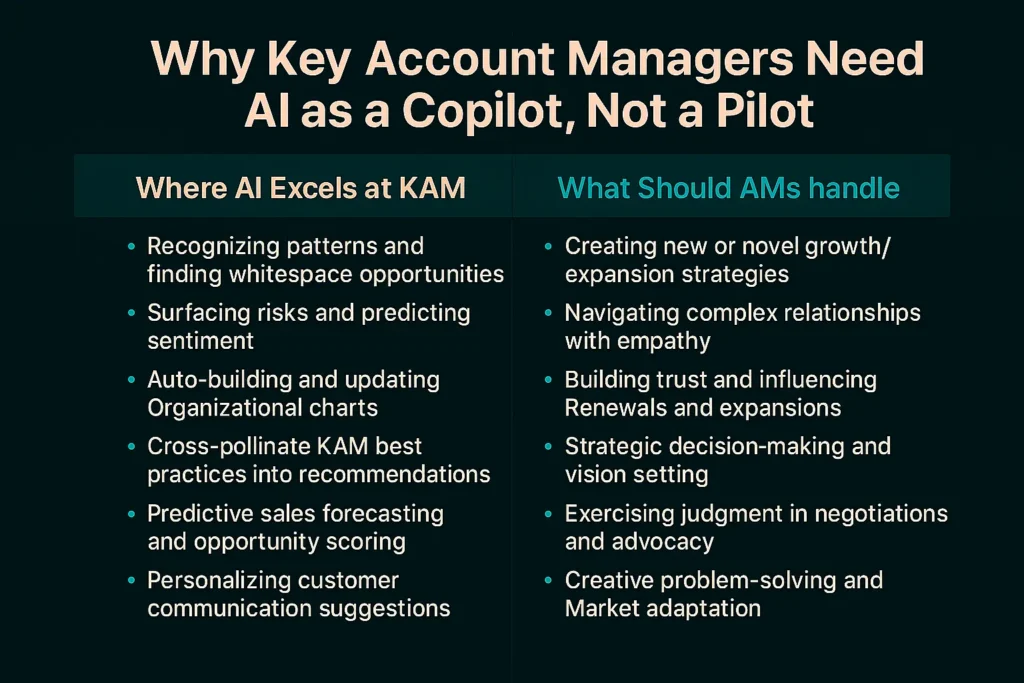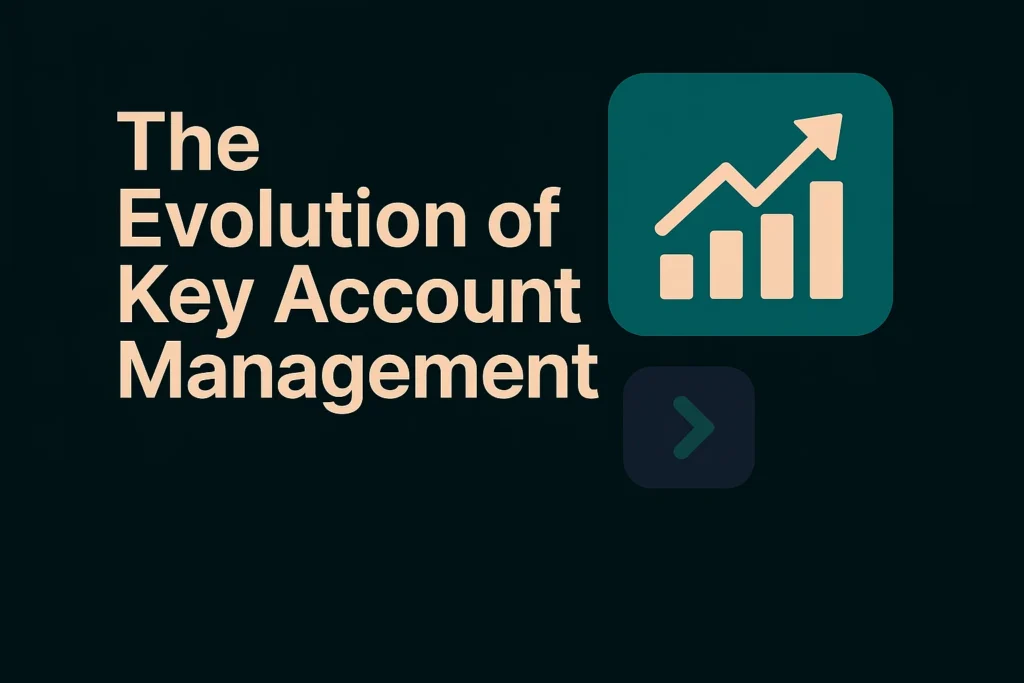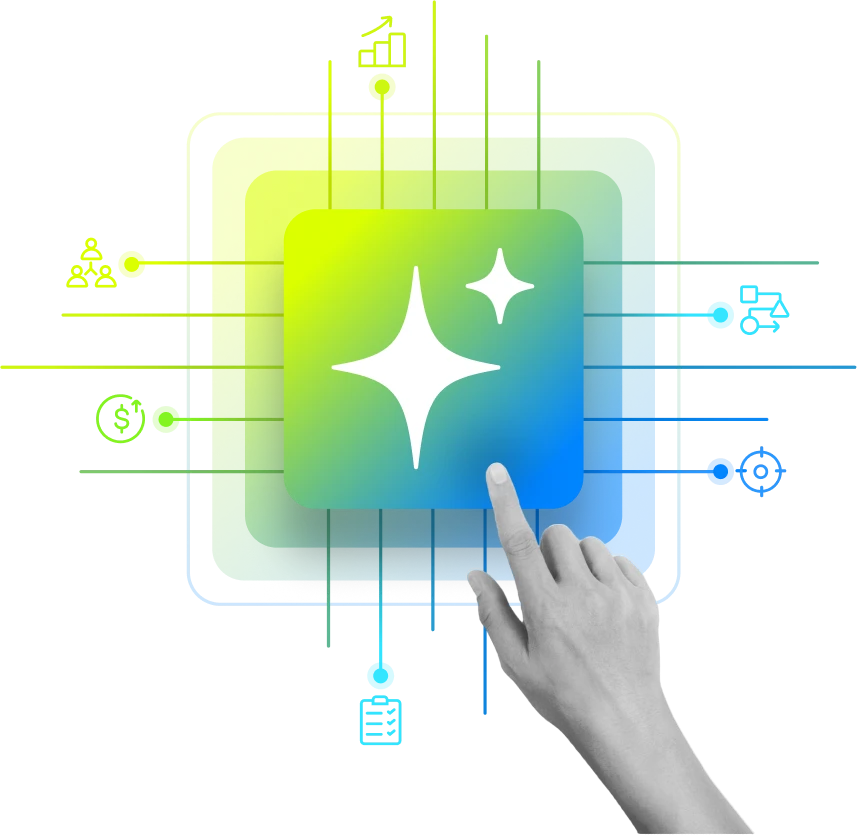It has been a quarter century since I first started working as an account manager with large B2B accounts. My career has been defined by the pursuit of transforming Key Account Management (KAM) from an art form reliant on individual genius into a reliable, repeatable science. I have seen the KAM landscape change drastically, and while every era brought its own set of challenges, the pace of transformation happening right now, and what is coming next, is simply unprecedented.
When I started, the greatest vulnerability was institutional memory, or the lack thereof. We knew that relying on guesswork or hope for those key relationships was a massive business risk. My journey has been a quest to systemize strategic growth, leading me to track what I view as six distinct, seismic leaps in how we approach account relationships and the tools we use to manage them. These phases show how we have leveled up our tools and mindset, one monumental step at a time.
The Evolution of Key Account Management
Phase 1: Tribal – The Age of the Hero Account Manager (AM)
The early days, which I call the Tribal phase, was dominated by the Hero AM. I will start with a memory of a colleague I’ll call Jay. Jay was a legend. His success was built purely on his innate instinct, incredible memory, and deep personal relationship skills. He knew his account and the buyers inside out, understood their political landscape, and navigated organizational complexities seamlessly. But all that intricate knowledge lived exclusively in his head.
This reliance on the individual was the core challenge and systemic risk of Phase 1. When organizations rely heavily on the personal skill set of a “hero,” they fail to treat customer knowledge as an institutional asset. Without broad, organization-wide standards for KAM, systemic and repeatable success was fundamentally unachievable.
The inherent risk was massive, and we lived in constant fear of it. If Jay left, all that invaluable intel, the nuanced history, the personal connections, and the relationship capital would simply be gone with him. We suffered from predictable failure modes, specifically the slow transfer of knowledge and the inadvertent omission of critical strategic steps when a new AM took over. The organization was consistently vulnerable, dependent on a few non-transferable personalities to drive its most valuable 80% revenue.
Phase 2: The Excel Wave – PPTs & Spreadsheets
Our first attempt to mitigate the massive organizational risk of the Tribal phase was documentation. This ushered in Phase 2: the age of PPTs and Spreadsheets. Account plans were meticulously constructed on slide decks, and growth strategies, including relationship and pipeline planning, were mapped out in complex, color-coded sheets. This documentation offered an initial sense of clarity, but it was static and quickly proved unscalable.
I vividly recall the agony of preparing for quarterly business reviews(QBRs). Preparing for a QBR meant, AMs would spend days and deal with multiple, conflicting versions of the same file, leading to confusion and errors. Critical client history was frequently buried, lost, or overwritten because the data lacked the necessary relational structure required for complex account management.
The central issue was the structural limitation of PPTs & spreadsheets. Key Account Management is fundamentally about managing complex, interconnected relationships- the shift from tactical interaction to strategic association. Spreadsheets, designed for simple rows and columns, are structurally incapable of handling the complex, multifaceted data relationships needed to seamlessly link customer interactions, sales history, and support tickets. This inflexibility meant that as soon as the business grew, the system broke. We could document things, but we certainly could not share, scale, review, or standardize those static plans across the organization. The result of this chaos was wasted time, lost growth opportunities, and poor client experiences where customers grew frustrated having to re-explain their needs and history repeatedly.
Here is a perfect, hilarious example of mishaps that happened more often than you think in Phase 1 & Phase 2
Phase 3: The System of Records – Powered by CRMs
The arrival of Customer Relationship Management (CRM) systems in Phase 3 marked the great leap into the System of Record. This centralized data and promised to pull us out of the version control nightmare of spreadsheet purgatory.
However, a great paradox quickly emerged. While CRMs were excellent at Lead Management, Opportunity Management, and Sales Pipeline Tracking, they fundamentally lacked the process and functionality required for strategic Key Account Management. Strategic KAM demands looking at the big picture for large, complex accounts, focusing on creating growth/expansion strategies and integrated relationships. The CRM left a significant “account planning gap.”
I remember a client, a large IT services firm, whose Salesforce CRM was diligently updated with transactional data, yet their organizational structures, relationship maps, and strategic growth planning existed entirely outside the system, scattered in PPTs & Excel. The fundamental misalignment was that these Phase 3 CRMs focused on selling (Opportunity Management) rather than growing (Account Planning). This forced AMs back into the tedious, heavy lifting of manual data entry and separate processes for strategic planning. The AMs felt the system worked against them, demanding labor but giving back little strategic clarity. This strategic misalignment confirmed the need for specialized technology that could move beyond merely tracking deals to visualizing the breadth and depth of key account relationships.
Phase 4: The System of Records – Powered by KAM tools
The strategic gap left by mainstream CRMs demanded a critical intervention: the emergence of specialized KAM platforms built around the central theme of customer-centricity. This is where tools designed to facilitate strategic account planning & growth, like Demandfarm, began to redefine the landscape.
KAM tools were specifically built to enable AMs and sales leaders to move from reactive to proactive account planning. All the account growth plans were transformed from rarely updated static spreadsheets and CRMs to living and breathing plans synced & updated in real-time. No more battling through endless versions of PPTs and Excel to prepare for QBRs.
KAM tools enabled account management teams to see deep into complex relationships visually using Org Charts, successfully target the right individuals to go “deeper & wider” into the buying units. It helped AMs spot hidden whitespaces for effective up-selling and cross-selling. KAM tools like DemandFarm started becoming the secret weapon for the world’s leading account management teams to defend and grow their top 20% key accounts.

Phase 5: The System of Intelligence – Powered by Automations, Workflows
Phase 5 marked the crucial transition where the System of Record evolved into the true System of Intelligence. The greatest challenge of Phase 3 & Phase 4 was manual data input, which was finally addressed as data began to be captured and built automatically in the background using intelligent automations and early AI.
This era introduced tools that deliver intelligent automations, predictive insights, and conversational intelligence to help Key Account Management (KAM) teams focus on real strategic work.
- Scoring an opportunity based on signals like deal win-loss patterns, sales methodology adherence, buying committee touch points, account account-level revenue performance
- Auto-charting of complex visual relationship maps from contact data
- Automated account research and actionable growth insights summarised
The consequence of this automation was the birth of true proactive account management & growth. The AM was majorly freed from the data input burden (the core problem of Phase 3 & 4). The system started dictating strategy based on continuous data streams, rather than just acting as a static documentation repository.
Phase 6: The AM’s Wingman – The AI Co-Pilot
Phase 6 has rapidly defined the modern Key Account Manager’s workflow. This phase is characterized by technology delivering contextual, on-demand, Ask me Anything insights on accounts, relationships, whitespace, and opportunities – the AI Co-Pilot. This technology is not merely a tool; it is an intelligent aide embedded directly into the daily operational ecosystem, generating significant productivity gains.
The daily life of a modern AM is transformed: AI automates the creation of meeting minutes, next steps, suggests drafts for emails, updates Customer Relationship Management (CRM) systems automatically.
The ultimate value of the Co-Pilot transcends simple automation; it is the strategic reallocation of human capital. By escaping the “admin trap”, the AM shifts their focus.
Phase 7: The Future AI Coach
The final frontier is The AI Coach. This is where technology transitions from being an assistant that responds to being a true leader that proactively guides teams.
The AI Coach will act as a constant mentor/consultant for the KAM team. It will not merely present data; it will spot issues and opportunities, nudging teams toward strategic growth. By continuously analyzing deal history, CRM data, and conversation transcripts, the AI Coach will deliver real-time risk intelligence, flagging “white spaces at risk” or identifying slow-moving account objectives where the AM should immediately focus their attention.
This system moves beyond prediction to prescription. For instance, the AI will not just predict churn; it will analyze the customer’s sentiment, compare it against market trends and competitive intelligence, and proactively suggest the next three best personalized communication steps. Furthermore, by incorporating complex variables, the system removes human bias from forecasting and provides explicit context, telling AMs why an opportunity is likely to close, perhaps identifying that prospects who have hired a new C-suite leader in the last 90 days are statistically more likely to convert.
This marks a profound shift because it levels the playing field, ensuring that the performance of the average AM moves significantly closer to the performance caliber of the best AMs, leading to shorter sales cycles, higher win rates, and improved revenue predictions across the entire KAM portfolio.
Conclusion: The Human Element Endures
Looking back across these seven phases from the tribal reliance on Jay’s memory to the forthcoming prescriptive capabilities of the AI Coach, the evolution is staggering. Technology has fundamentally shifted the how of account management, moving the foundation from fragile memory to static documentation, to structured data, to automated intelligence, and now to proactive coaching.
But amid this tremendous technological evolution, the fundamental principle of Key Account Management remains unchanged: the necessity of building a strong, long-term, strategic association with the most valuable customers. While the AI handles the logistics, the complex analysis, the early risk warnings, and the prescriptive nudges, the human Account Manager’s role is paradoxically more critical than ever. The AMs must now focus exclusively on the high-value emotional connection, deepening trust, and leading the complex process of value co-creation. Technology removes the burden of administration and data; humanity delivers the strategic partnership.

The journey continues, and the acceleration is palpable. Have you noticed similar shifts in your organization, or maybe something completely different? Tell me about your journey and what you think lies ahead.

